6 Animals Similar to the Raccoon


Reviewed and approved by the biologist Samuel Sanchez
Raccoons are part of the Procyonidae family. These mammals are medium in size and the group includes other animals similar to the raccoon, such as cacomixtles, coatis, and kinkajous.
These cited species from the same family aren’t actually raccoons, but they do show a clear resemblance to them, as do species from other families. Here you’ll get to know everything about six animals that are similar to the raccoon.
Characteristics of raccoons
One of the main characteristics of raccoons is the mask of black fur that covers their eyes. This trait is believed to help reduce glare and improve their night vision, experts say. In addition to this peculiarity, there are also others:
- Another notable feature is its tail, alternated by stripes of light and dark colors. The fur that covers its body is dense, to protect the animal from the cold, and grayish-brown in color.
- All 5 toes on a raccoon’s front legs are extremely dexterous. They allow them to grasp and manipulate food found in nature and a wide variety of objects, such as door handles, locks, jars and cans.
- The raccoon is omnivorous and its diet is largely determined by its environment. Their common foods include fruits, plants, nuts, berries, insects, rodents, frogs, eggs, and crayfish. In urban settings, they often forage for food in the garbage.
Raccoon species
In the world, there are 3 main species of raccoons, says Wildlife Control. Some of them can be found hanging around urban areas and others in nature. Here are two of them:
- The Cozumel raccoon or pygmy raccoon (Procyon pygmaeus): This species of raccoon is found on the island of Cozumel, located off the coast of the Yucatan Peninsula, in Mexico. Unfortunately, this species is highly endangered, so you will never see it roaming your property.
- The maned pope, mayuato or South American raccoon (Procyon cancrivorus): this is native to South America and is found in tropical regions, on both sides of the Andes.
The latter is also called crab raccoon, because this species preys on crabs. However, like other types of raccoons, it also eats a wide variety of foods.
The fur pattern of this species is slightly different from that of raccoons found in the United States, as its fur isn’t thick; it appears thinner and smaller.
Beyond these little-known species, we shouldn’t forget the most emblematic specimen in this group:
- The boreal or racuna raccoon (Procyon lotor): it’s also called mangrove fox, mangrove cat, common raccoon, and washing bear. It’s the largest and most popular among the raccoon species.
This mammal can be found roaming properties in the United States, Canada, and also in countries such as Japan, Russia, and Germany. In addition, it can live in almost any habitat, such as urban and residential areas, forests and parks, says Wildlife NYC.
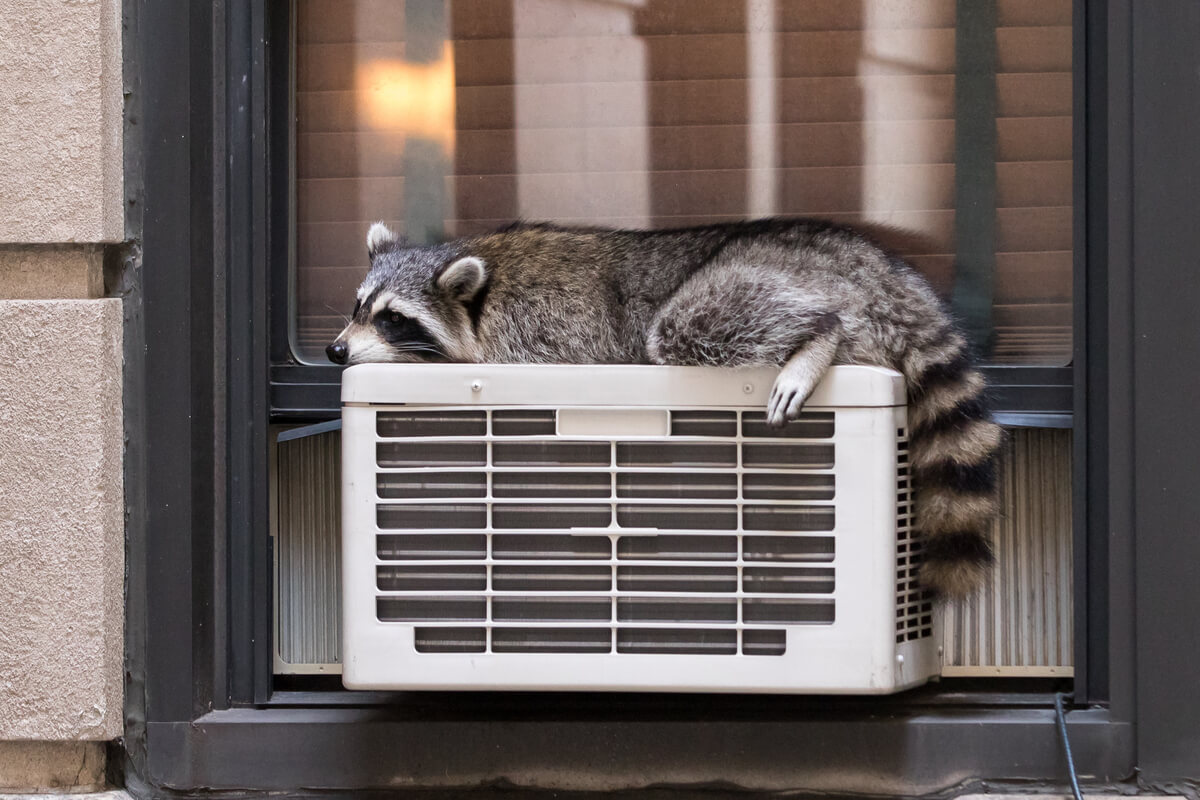
6 animals similar to raccoons
The raccoon is the best known of the procyonids (Procyonidae), but, apart from it, there are other animals similar to the raccoon that aren’t necessarily part of this group. We’ll give you some examples in the following lines.
1. Coati (Nasua nasua)
This mammal —which belongs to the procyonid family— is diurnal and lives in social groups of up to 30 or more animals. Like the raccoon and cacomixtle, coatis are omnivores and feed both on the ground and in trees.
They are longer than a raccoon, with a triangular head, a pointed nose, an elongated snout, and a “face mask”. Its tail is very long and not clearly ringed – like the raccoon’s is.
Experts say that the ears of these animals are small and rounded, they have 5 fingers equipped with strong claws, their fur is long, dense and their coloration varies according to geographical location and age. Its back ranges from yellowish-brown to dark brown —almost black—, while its belly ranges from whitish to an intense orange.
In coati bands, adult males aren’t welcome except during mating season, says the Desert Museum. A pregnant female leaves the group to give birth to her 4 or 6 babies and rejoins the group several weeks later, with her new offspring.
These animals are found in South America, from Venezuela, Colombia and in all countries (except Chile) to the north of Argentina and Uruguay.
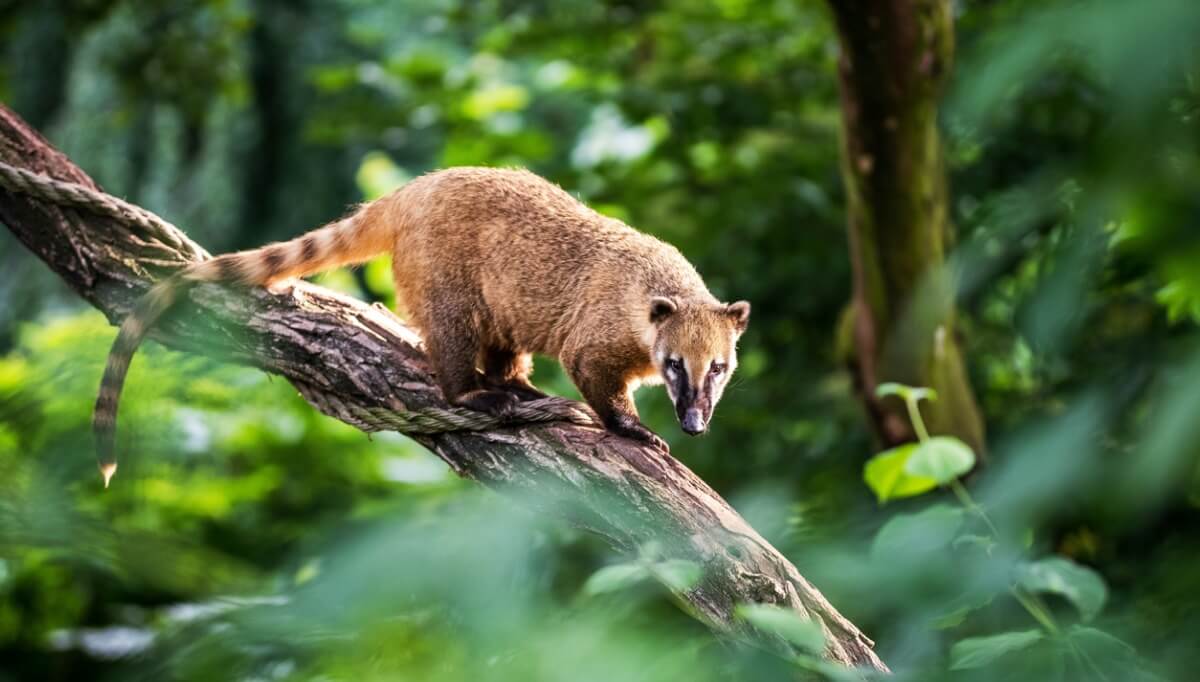
2. Northern Cacomixtle (Bassariscus astutus)
The northern cacomixtle is also known as rintel, basáride or basarisco and also belongs to the procyonid family. It’s found from southern Oregon —in the United States— to Oaxaca, in Mexico.
This animal is the size of a squirrel and grayish-brown in color. It has large black eyes, pink ears, a tiny face, and a long black and white ringed tail longer than its body; this definitely makes it one of the animals most similar to raccoons.
Furthermore, these are nocturnal animals that use their large eyes and keen sense of smell to locate their prey. They are excellent climbers and jumpers and use their long tails for balance.
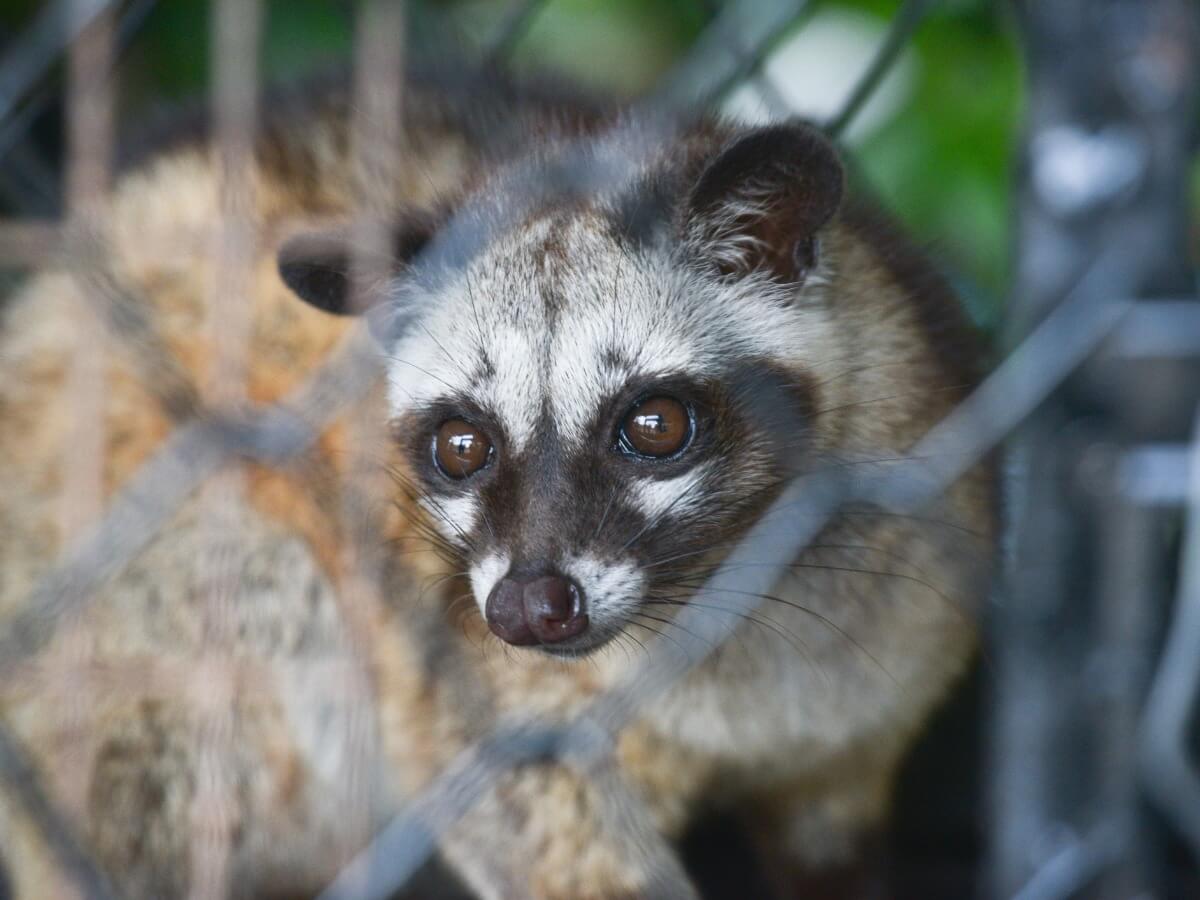
3. Kinkajou (Potos flavus)
Kinkajous live most of the time in the trees of the rainforests of Central and South America. Their tails allow them to latch onto trunks and branches as if they were another arm. It also helps them to swing and protect themselves from the cold, as if this limb were a blanket.
These characteristics make you believe that you’re talking about a primate, but, in reality, the kinkajou is another of the animals similar to the raccoon, because it is, in fact, related to it. Indeed, it’s also part of the procyonid family.
In addition, these mammals are related to bears, due to the taste they have for honey, says National Geographic. To feed, they look for hives, fruit, and small mammals. They’re active at night and live in groups in the treetops, where they carry out social activities – such as grooming themselves.
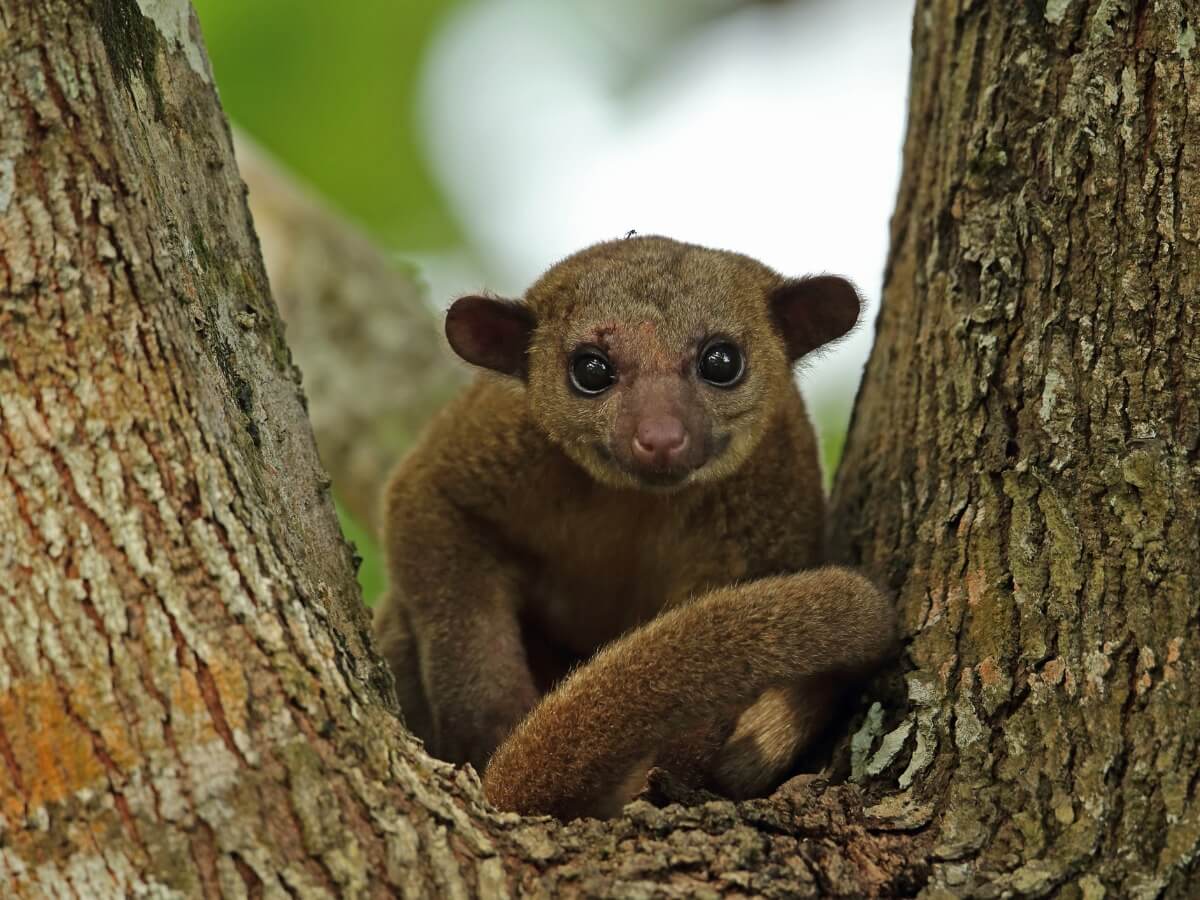
4. Olinguito (Bassaricyon neblina)
The olinguito is a species of carnivorous mammal that also makes up the group of procyonids. In 2013, it was identified as a new species by Kristofer Helgen of the Smithsonian Institute, who discovered differences between the olingos of the American continent and those that inhabit Colombia and Ecuador.
It’s the smallest species of its genus, while its fur is dense orange or reddish-brown. Its tail is voluminous, its eyes are very large and its dark gray muzzle is medium in size and pointed in shape.
These animals depend on the forests to live; they’re solitary and nocturnal and feed on fruits and meat. It is a new species and there are no conservation plans as yet, but it’s under threat from human activity and climate change.
Being an endemic species, it depends exclusively on the area it lives in. These animals have one offspring per gestation – between 110 and 120 days – and are found in the Andean region of Colombia and in the northern part of Ecuador.
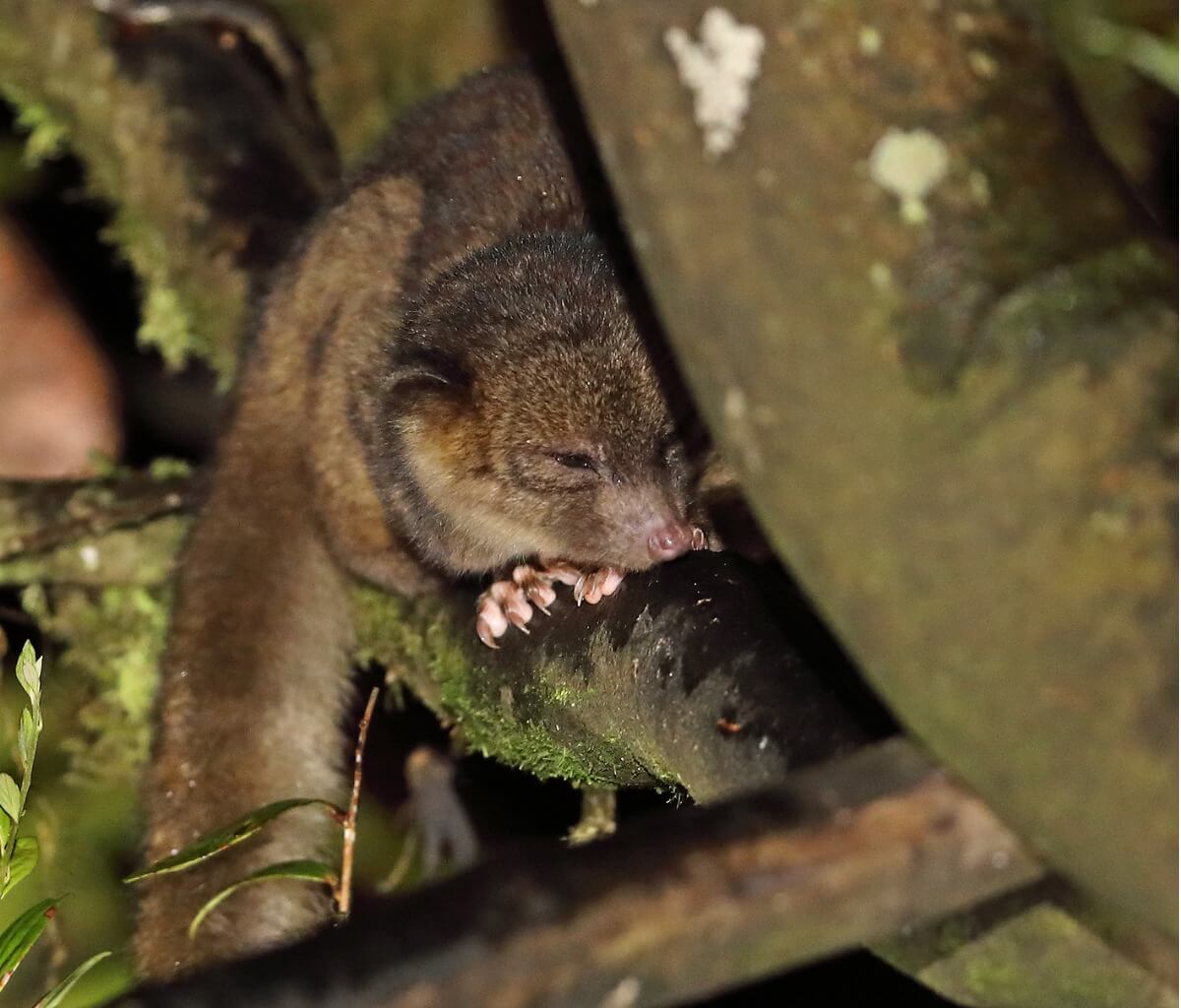
5. Raccoon dog or tanuki (Nyctereutes procyonoides)
This is also known as the Japanese dog and is part of the canine family (Canidae), which is made up of wolves, dogs, and coyotes, among others. Again, it’s part of our group of animals that are similar to raccoons and is native to eastern China, Korea, and Japan.
This mammal has the appearance of a small fox-like dog, with fur markings similar to those of raccoons. The specimens of this species have small heads with pointed faces, the legs are short and, in general, the body is robust.
Studies confirm that raccoon dogs live and hunt in pairs or small family groups. When they sleep or rest, couples usually stay in contact with each other and social grooming is also important between them.
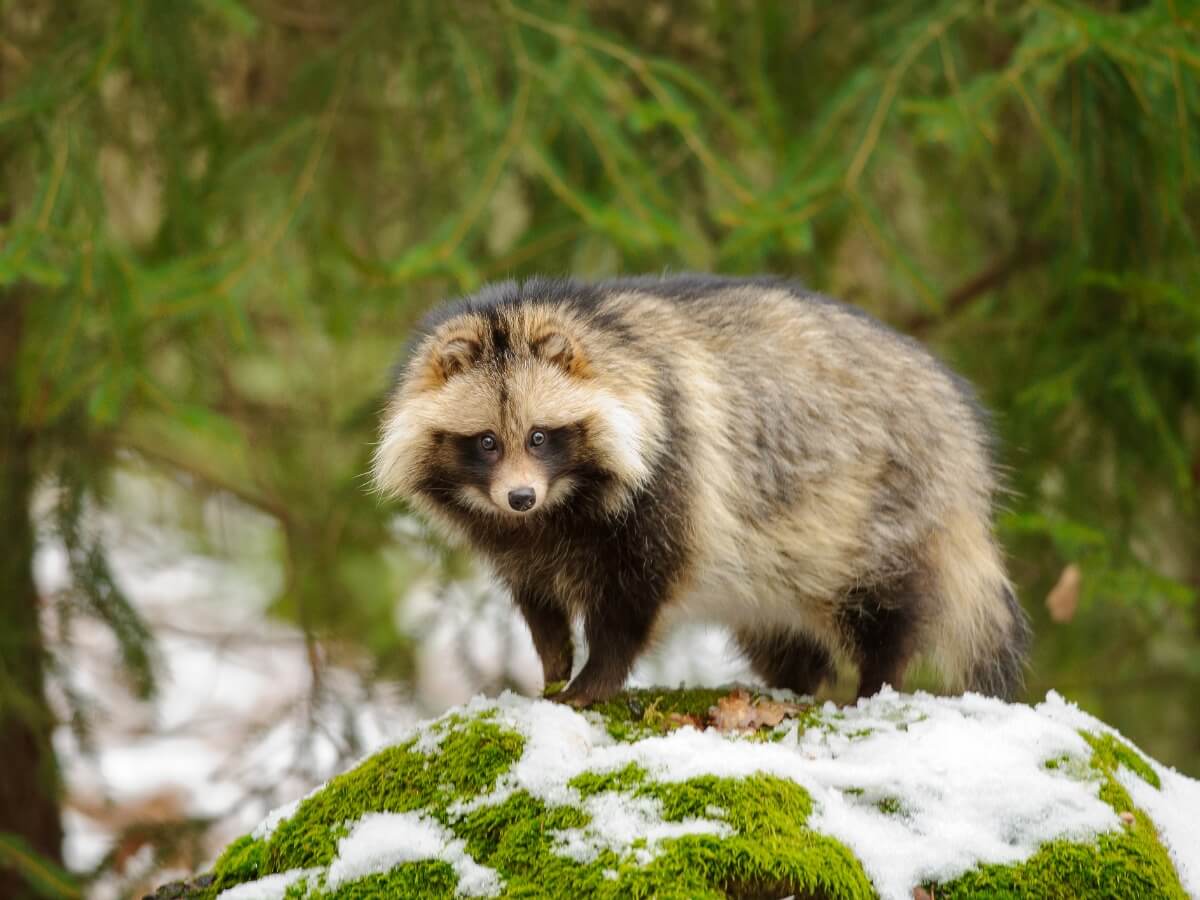
6. Lesser panda (Ailurus fulgens)
When attempting to classify it, this animal gave experts quite a headache, as it was considered to be a relative of the giant panda, but, at the same time, of the raccoon, being very similar to the raccoon in looks. In the end, it was assigned its very own family (Ailuridae).
Normally, these mammals are the size of a domestic cat and their tail adds 46 centimeters (18 inches) to their body. The tail’s function is to serve as a type of blanket on the summits of the mountains. They inhabit high-altitude rainforests, like the giant panda, and they live in the mountains of Nepal, northern Burma and in the central regions of China.
It’s an endangered species, due to illegal hunting and deforestation, and because its habitat is reduced by logging and agriculture.
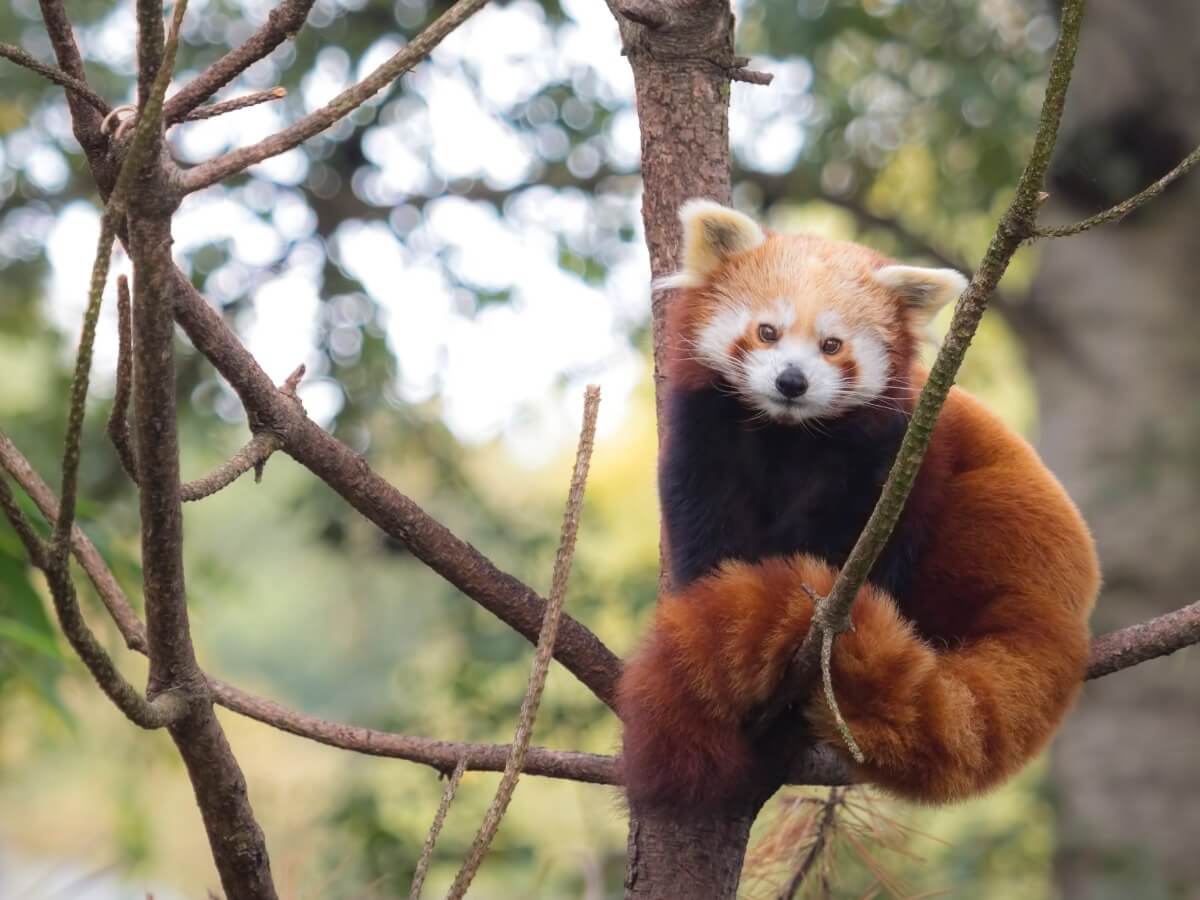
As you can see, there are several animals similar to the raccoon, many belonging to the same family and others not. All of these mammals are similar to the typical raccoon as regards their tail, their mask, their size, and their life in the trees, among many other characteristics.
All cited sources were thoroughly reviewed by our team to ensure their quality, reliability, currency, and validity. The bibliography of this article was considered reliable and of academic or scientific accuracy.
Carr, K. (s. f.). Nyctereutes procyonoides (raccoon dog). Animal Diversity Web. Recuperado 21 de mayo de 2021, de https://animaldiversity.org/accounts/Nyctereutes_procyonoides/
Control, M. S. W. (2018, 2 agosto). What Are the Different Types of Raccoons in the World and What Do We Have in Toronto? Markham Wildlife Removal. https://www.markhamwildliferemoval.com/different-types-of-raccoons-in-the-world/
Desert Museum Arizona – Sonora. (s. f.). Procyonids: Raccoons, Ringtails & Coatis. Desert Museum. Recuperado 21 de mayo de 2021, de https://www.desertmuseum.org/books/nhsd_procyonids.php#:%7E:text=Among%20the%20most%20unusual%2C%20most,other%20parts%20of%20the%20country
PBS. (2021, 1 abril). Raccoon Nation ~ Raccoon Facts | Nature | PBS. https://www.pbs.org/wnet/nature/raccoon-nation-raccoon-fact-sheet/7553/
Redacción National Geographic. (2020a, noviembre 5). Kinkajú. National Geographic. https://www.nationalgeographic.es/animales/kinkaju
Redacción National Geographic. (2020b, noviembre 5). Panda rojo. National Geographic. https://www.nationalgeographic.es/animales/panda-rojo
SIB. (s. f.). Nasua nasua (coatí – Coati) | SIB, Parques Nacionales, Argentina. Sistema de Información de Biodiversidad. Recuperado 21 de mayo de 2021, de https://sib.gob.ar/especies/nasua-nasua
Universidad Central de Bogotá. (s. f.). Olinguito. Universidad Central. Recuperado 21 de mayo de 2021, de https://www.ucentral.edu.co/noticentral/olinguito
Wildlife NYC. (s. f.). Raccoons – WildlifeNYC. Recuperado 21 de mayo de 2021, de https://www1.nyc.gov/site/wildlifenyc/animals/raccoons.page
This text is provided for informational purposes only and does not replace consultation with a professional. If in doubt, consult your specialist.